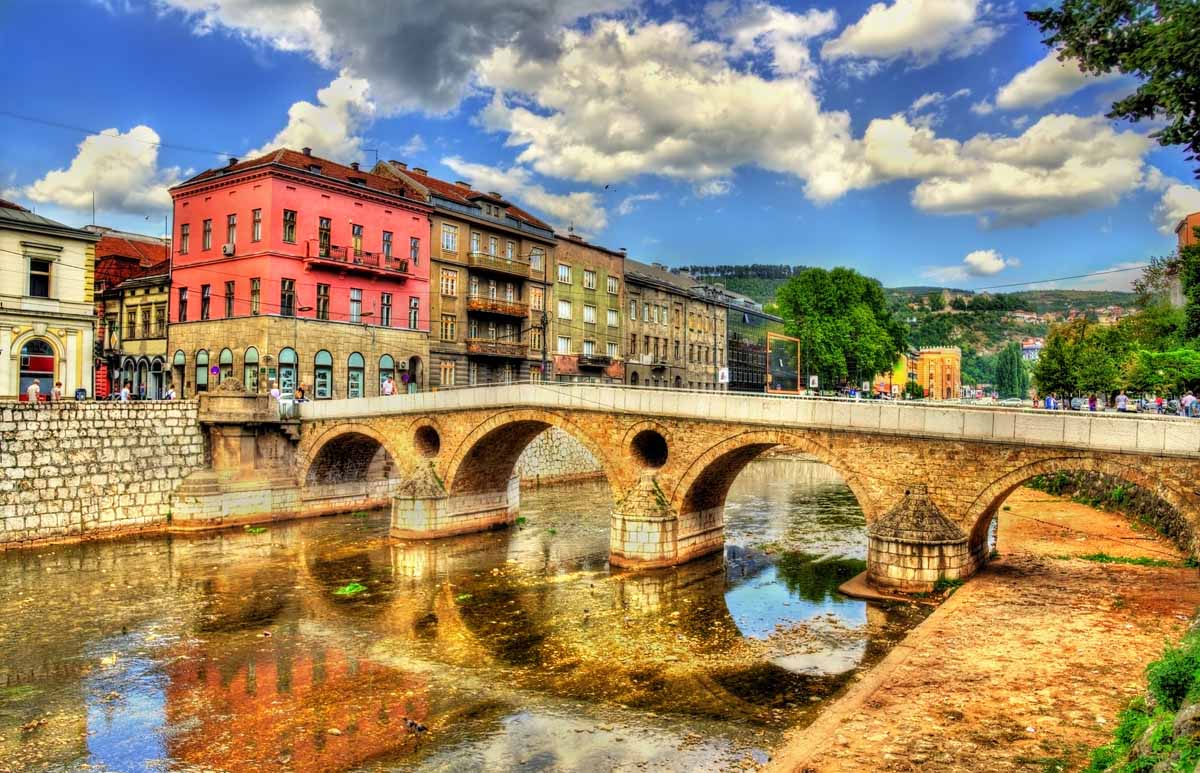About Bosnia and Herzegovina
Bosnia and Herzegovina is a country located in Southeast Europe on the Balkan Peninsula. It is known for its rich cultural heritage, diverse history, and stunning natural landscapes. Key points:
- Geography: The country is mostly mountainous, with the Dinaric Alps running through it. It has a mix of rivers, lakes, and forests, making it a beautiful destination for outdoor activities.
- Capital: The capital city is Sarajevo, which has a unique blend of Ottoman, Austro-Hungarian, and modern architecture. It is known for its historical significance and multicultural atmosphere.
- Population: Bosnia and Herzegovina has a diverse population, primarily consisting of Bosniaks, Croats, and Serbs, each with distinct cultural and religious traditions.
- History: The country has a complex history, having been part of various empires and states. It was part of Yugoslavia until its breakup in the early 1990s.
- Culture: The culture is a mix of Eastern and Western influences, evident in its cuisine, music, and festivals. Traditional dishes include cevapi, baklava, and various dairy products.
- Tourism: Bosnia and Herzegovina is becoming increasingly popular as a tourist destination, known for places like Mostar, with its iconic bridge, and the natural beauty of national parks like Sutjeska and Una.
- Economy: The economy is still recovering from the effects of war, with key sectors including manufacturing, agriculture, and tourism.
The country is a unique blend of cultures, histories, and natural beauty, making it an interesting place to explore.
About Sarajevo
Sarajevo is the capital and largest city of Bosnia and Herzegovina. Sarajevo is the political, financial, social, and cultural center of Bosnia and Herzegovina and a prominent center of culture in the Balkans. It exerts region-wide influence in entertainment, media, fashion, and the arts. Due to its long history of religious and cultural diversity, Sarajevo is sometimes called the "Jerusalem of Europe". It is one of a few major European cities to have a mosque, Catholic church, Eastern Orthodox church and synagogue within the same neighborhood.
Although there is evidence of human settlement in the area since prehistoric times, the modern city arose in the 15th century as an Ottoman stronghold when the Ottoman empire extended into Europe. Sarajevo has gained international renown several times throughout its history. In 1885, it was the first city in Europe and the second city in the world to have a full-time electric tram network running through the city, following San Francisco.
In 1984, Sarajevo hosted the 1984 Winter Olympics, which marked a prosperous era for the city. However, after the start of the Yugoslav Wars, the city suffered the longest siege of a capital city in the history of modern warfare, for a total of 1,425 days, from April 1992 to February 1996, during the Bosnian War. With continued post-war reconstruction in the aftermath, Sarajevo is the fastest growing city in Bosnia and Herzegovina. Sarajevo is known for the old part of the city called Baščaršija, as well as for its traditional food, which mainly consists of meat, of which Sarajevo's kebabs are the most famous.
